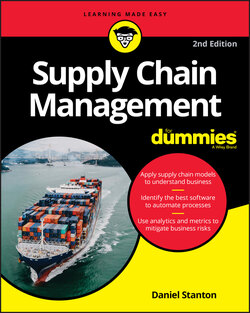Читать книгу Supply Chain Management For Dummies - Daniel Stanton - Страница 64
Inventory versus customer service
ОглавлениеInventory costs money because it ties up working capital, eats up labor and real estate, and depreciates quickly. Many supply chain professionals and business analysts will even tell you that inventory is the enemy. You may wonder why everyone doesn’t eliminate all inventory. Wouldn’t supply chain management be a whole lot easier if you didn’t have to deal with warehouses, distribution centers, and stock rooms?
That approach has one major problem: Companies make money by selling products to their customers, and if they have no product to sell, they earn no revenue. When you think about what customers value — what they’re willing to pay for — the product itself is only part of the equation. You have to consider, for example, whether customers would be willing to pay the same amount for your product if they had to pick it up 100 miles away or had to wait for it for a year. In other words, the placement and availability of a product have a big effect on its value to your customers and on your revenue. Inventory acts as a buffer against uncertainty about who’s going to buy your product, how much they’re going to buy, when they’re going to buy it, and where they’re going to want it.
Whether your customers buy your product in a store or through a website, your ability to provide them all the products they want when they order them is called your service level. High service levels are good for business. Customers tend to buy from suppliers that meet their needs quickly, so high service levels can increase revenue and grow market share. Achieving a high service level typically requires you to have inventory on hand. To maintain a 100 percent service level, you’d need to have an infinite amount of inventory, which is unrealistic, so you need to find ways to manage the tension between reducing inventories to lower costs and increasing inventories to maintain acceptable service levels.
Companies balance inventory levels and service levels by optimizing their inventory. Inventory optimization is a process of reducing inventories to the minimum level necessary to maintain the desired service level. Inventory optimization starts with forecasting, the process in which you try to guess how much product you’re going to sell and when you’re going to sell it. Companies have many ways to generate forecasts, ranging from rules of thumb to sophisticated statistical modeling. No matter what forecasting method you use, the truth is that your forecast is still a guess. A common joke among supply chain professionals is that the first law of forecasting is that the forecast is always wrong.
The way to deal with potential errors in a forecast is to keep extra inventory on hand. The better the forecast is — the more confidence you have in it — the less extra inventory you need to keep to meet your desired customer service levels. If you don’t trust your forecast and want to make sure that you have products to sell when customers want them, you need to carry extra inventory.
The degree to which a forecast is wrong is called forecast error. Improving your forecasts involves reducing this error as much as possible. Two kinds of errors can occur in a forecast:
An unbiased error is random and generally is a result of imperfect information.
A biased error is an error that occurs in a pattern. A forecast might always be higher or lower than actual sales, for example.
Figure 3-3 shows an example of a biased forecast that’s always higher than the actual sales. If you can measure the amount of bias, you can take the bias into account to create a new adjusted forecast.
FIGURE 3-3: Biased forecast.
It’s often easy to spot forecast bias by creating a graph that compares forecast data with actual data.
The degree of forecast accuracy is usually measured as the mean absolute percentage error (MAPE).
When everything is said and done, the real way that most companies deal with the potential for errors in a forecast is by increasing their inventory. So the better the forecast is — the more confidence that you have in it — the less extra inventory you need to keep to meet your desired customer service levels. But if you don’t trust your forecast, and you want to make sure that you have products to sell when customers want them, you need to invest in extra inventory. Inventory that you buy because of uncertainty about the future is called safety stock.
